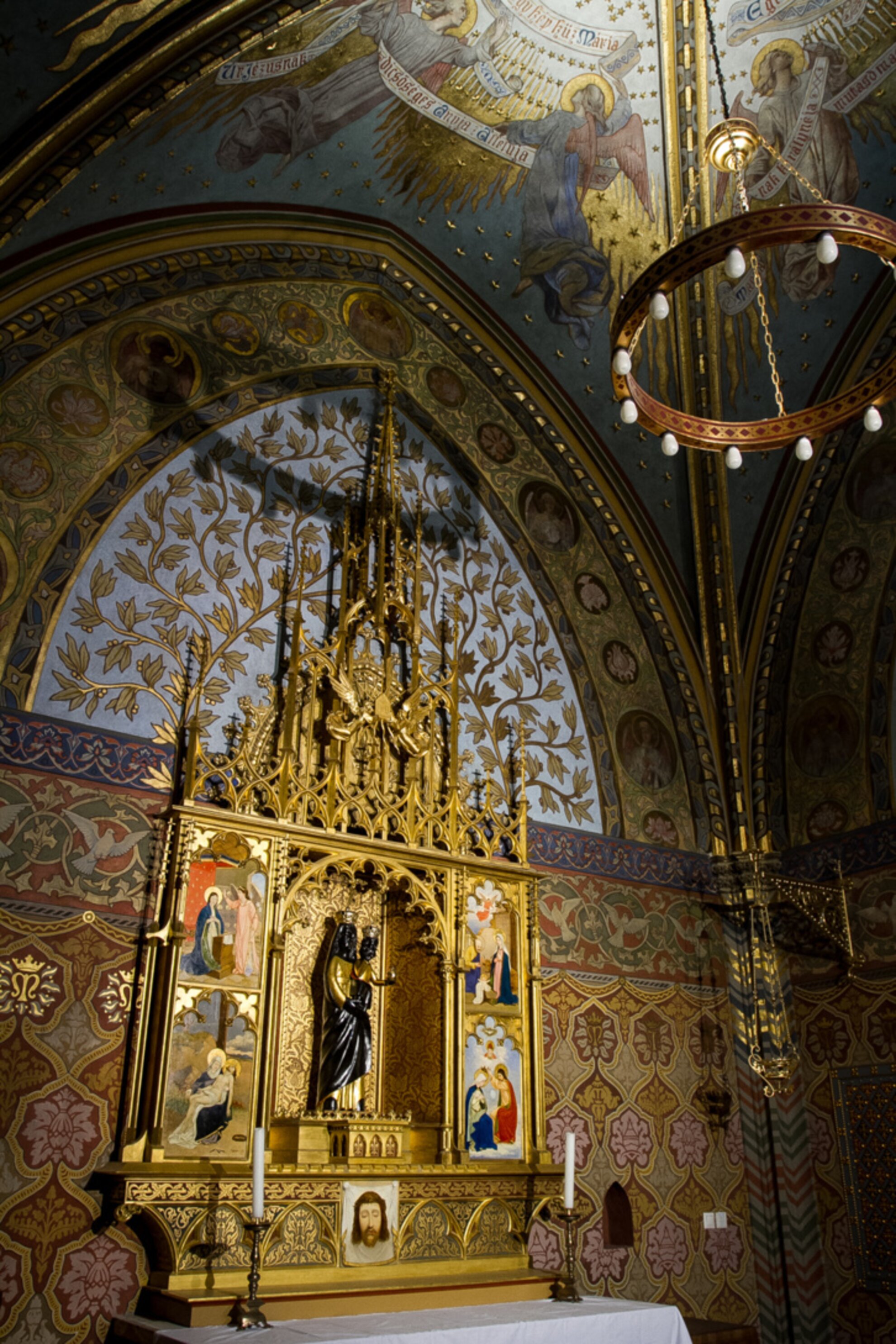Troubled pastThe present look of the medieval-era cathedral is the result of an architectural vision. The building was founded by King Béla IV and was rebuilt several times in the Middle Ages; during the Ottoman era, it was used for alternative religious purposes as a mosque; and the church survived the most difficult centuries after being rebuilt in the Baroque era. Hapsburg Emperor Franz József decided to renovate the building in 1873, and the "Coronation Church" was finished after two decades of reconstruction in 1896.


Between 1874 and 1896, Frigyes Schulek rebuilt the building and removed all non-medieval elements, following the era’s purist approach. Where he found no clues to the original design, he recreated the architectural details based on his own ideas – this was a common practice in those times. However, according to recent studies, Schulek kept all elements he could, and his work is valuable in itself as well.


The interior’s much-admired wall paintings were created by the era’s greatest artists, Károly Lotz and Bertalan Székely, based on the plans of Schulek.Prettier inside and outThe building’s condition deteriorated significantly over recent decades, affected by the bad building materials used after the World War II, air pollution, and numerous tourist “attacks” every year.

The first stage of the renovation included the studying of the plans of Schulek, guarded in Kiscelli Museum, followed by a lengthy examination of the condition of the building. Interestingly, the restorers mapped the wall with high-tech devices that were never used for such renovations before, which utilize electronic waves so as not to damage the walls any further.

It is difficult to list all of the details that have been renewed from the basement to the attic; it might be clearer if we tell you the numbers. Approximately 150,000 tiles were reproduced by Zsolnay so that the roof's distinctive pattern and colors could be revived, and the elements necessary for the flooring were supplied by Pesti Kerámia. The conservators restored about 250 square meters of stained-glass windows, 600 square meters of murals, and 11,000 square meters of decorative paintings.

In addition, they also renewed the oak wood gates and the furnishing. The latter was enriched with a clean, block-like main altar, based on the ideas of leading designer Zoltán Deák .Renewed exhibition spaceDuring the renovation, the main goal was not just the reconstruction of the remaining parts of the building, but also addressing the challenge of the many visitors, varied events, weddings, and concerts to be held there in the future. Therefore, now there is a box office – which fits perfectly into its environment – and a new exhibition space. By the way, the museum of the church – the Ecclesiastic Art Collection of the Matthias Church – has been operating since 1964.

In the chancel aisle of the church, in the so-called Béla Hall, items that were found in the tower during the renovations are displayed. Here we can look at a certificate signed by Hungarian writer Mór Jókai in 1894, a commemorative badge of Soviet-Hungarian friendship, the retired weathervane of the Béla Tower, and a Kossuth-brand cigarette at the same place. These items found in the tower were restored and copied, so the originals were put back in their previous place, while the copies are now shown in the visitors’ center.
After the renovation, we were impressed beyond words: whether you are from Budapest or not, this place is definitely worth a visit. One of the best ways to see the cathedral's interior while enjoying resonant music is to attend one of the many classical concerts held in the church – this month, the Hungarian Virtuosi Chamber Orchestra performs here on August 8, 22, 23, and 30 at 8pm; check out www.concertbudapest.com for details and tickets.




